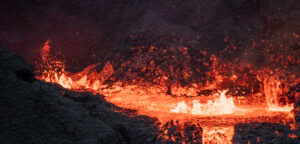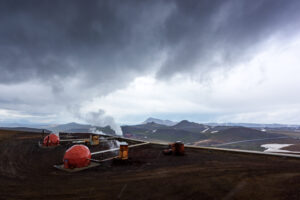The stunning natural wonder of Yellowstone National Park, particularly in Wyoming, is famous for its geysers, hot springs, and several animals. However, underneath its floor is the Yellowstone Supervolcano, additionally known as the Yellowstone Caldera, which poses a potentially devastating risk.
Although it hasn’t erupted in over 640,000 years, there are traumatic signs that it may accomplish that at any point in destiny. This essay will discuss the catastrophic ramifications of a hypothetical eruption of the Yellowstone Supervolcano, looking at each of the fast—and long—term repercussions of this devastating incident.
Understanding the Yellowstone Supervolcano
Let’s first take a look at the Yellowstone Supervolcano’s definition earlier than shifting directly to the disastrous opportunities.
Beneath Yellowstone National Park is a large volcanic tool known as the Yellowstone Caldera or Supervolcano. Because it’s far a supervolcano, this means that it is able to erupt with a force hundreds of times more than that of an everyday volcano; this is only sometimes your everyday volcano. Alternatively, it indicates that an eruption with a Volcanic Explosivity Index (VEI) of eight has occurred. This shows that an eruption of this length would produce deposits larger than 1,000 cubic kilometers or 240 cubic miles.
That’s really considerable now. Frightening as properly.
How big is the magma chamber under Yellowstone?
There are two parts to the magma chamber beneath Yellowstone. The first one is deeper and mostly made up of the high-silica rock type rhyolite. Its dimensions are around 40 kilometers (25 miles) in width and nearly 90 kilometers (55 miles) in length. It extends from about 5 kilometers to about 17 kilometers (3 to 10 miles) below the surface. There is between 5 and 15% molten material in this primarily solid chamber.

The second, more bottomless reservoir is found 20 to 50 kilometers (12 to 30 miles) below the Earth’s surface and is composed of basalt, a low-silica rock type. Even though the bottomless reservoir is about 4.5 times bigger than the shallow chamber, it only has around 2% of its molten material.
How could the Yellowstone eruption happen?
If a Yellowstone Supervolcano were to erupt, the events would unfold in the following sequence:
The process begins with the slow increase in temperature originating from the Earth’s core, leading to the melting of the molten rock beneath the Earth’s surface. The process creates a complicated mixture of magma, rocks, vapors, carbon dioxide, and various gases. Over thousands of years, this mixture would gather and rise, applying great force to slowly raise the land into a dome while creating cracks along its edges. The pressure would slowly dissipate through these fissures.
The dissolved gasses would explosively escape, leading to a quick release of magma that covers the park.
Is Yellowstone eruption a real threat nowadays?
Scientists often observe Yellowstone for indications of volcanic activity. In 2023, the Supervolcano was not on the verge of erupting, but it was still active. Over time, the volcano has undergone numerous minor eruptions and thousands of tiny earthquakes, suggesting its active status.
What is the precise definition of “alive”? It signifies the following in greater detail:
Yellowstone’s active condition is mainly attributed to the ongoing geothermal activity in the region. This encompasses the periodic eruptions of geysers such as Old Faithful, the existence of hot springs, and the emission of gasses from the Earth’s crust. The symptoms are caused by the heat and fluids ascending from the underlying magma chamber.
The Yellowstone Supervolcano has a shallow magma chamber that holds molten rock (magma) beneath the Earth’s surface and serves as its heat source. The chamber’s heat sustains the high-temperature conditions that form the park’s geothermal features.
Yellowstone undergoes geological changes over time and is not static. Magma movement beneath the surface of the Yellowstone caldera has caused fluctuations in the floor level in the past, indicating a dynamic system.
There is a possibility of future volcanic activity at Yellowstone due to its history of eruptions and current geological activity, even if the likelihood of a catastrophic super-eruption in the near future is low. Scientists closely watch Yellowstone to detect any signals of heightened volcanic activity or potential risks.
Yellowstone is considered “alive” because of its dynamic geological system, continuous geothermal activity, heat supply from a magma chamber, and the possibility of future volcanic outbursts, albeit few within human timelines.
This word indicates that the Supervolcano is not dormant and still impacts the Yellowstone region’s terrain and environment.
Read also: What Would Happen If A Black Hole Hit Earth?
The Immediate Impact
An eruption of Yellowstone would have catastrophic immediate implications inside its blast zone. Here is what would occur:
Explosive Eruption: A significant detonation would happen, releasing millions of tons of ash, rock, and gas into the atmosphere.
Ashfall would cover the nearby area, hindering breathing and leading to serious health issues. The ash has the potential to disperse throughout the United States, impacting significant regions of the country.
Debris Flow: Extremely hot pyroclastic flows would rapidly descend the mountainsides, burning everything in their way.
Earthquakes: The volcanic eruption would result in significant seismic activity, leading to additional damage.
Estimating the Human Toll
One of the most severe consequences of a Yellowstone eruption is the potential loss of human life. Experts have tried to quantify the possible human impact, but specific estimates are challenging to determine due to the numerous variables involved.
Immediate Impact: In the immediate blast zone, including Yellowstone and its immediate surroundings, the death toll would be catastrophic. Many people could die as a result of the explosive eruption, pyroclastic flows, earthquakes, and ashfall.
Secondary Impact: The effects would differ depending on factors such as wind direction and population density outside the immediate blast zone. Ashfall and volcanic winter may cause more deaths, especially among vulnerable people.

The global repercussions of a Yellowstone eruption-induced volcanic winter might be extensive. Poor harvests, insufficient food supplies, and social upheaval in different regions globally may result in more deaths over a prolonged duration.
Long-term consequences include ecosystem disruption and food chain disturbances, leading to diminished food supply and loss of biodiversity, which could indirectly impact human populations. These figures are hypothetical, and the actual number of casualties would be influenced by factors like the eruption’s timing, preparedness efforts, and international collaboration in disaster response.
Climate Impact
The repercussions of a Yellowstone eruption would reach well past the region without delay laid low with the preliminary explosion. The worldwide climate could face massive impacts.
Volcanic Winter: The good-sized quantities of ash and gasses emitted into the atmosphere would hinder daylight, resulting in volcanic iciness. A supervolcano eruption in Yellowstone may emit enough particles to provide a widespread international cooling effect, resulting in a decrease in temperature with the aid of several levels for several years. This might have a global impact on agriculture and ecosystems.
Crop failures may also occur because of decreased sunlight and cooler temperatures, which can lead to food shortages and famine.
Ecosystem collapse may destabilize or damage many ecosystems, resulting in the extinction of several plant and animal species.
The Aftermath
Yellowstone’s effects would persist for an extended period beyond the first eruption, possibly lasting for years or even decades.
Ash Cleanup: The cleanup process would be a substantial endeavor, necessitating considerable money and time.
Restoring ecosystems may require centuries, or they may only partially return. The enduring impacts of global climate change may linger for years, influencing weather patterns and agriculture.
Read also: What Would Happen If Jupiter Disappeared?
Ongoing Research and Monitoring of the Volcano
Researchers are investigating Yellowstone’s volcanic activity to enhance their comprehension of the dangers and possible indicators of an eruption. An essential aspect is the framework set up to monitor volcano activities. What is the precise meaning of that? What is utilized for monitoring?

Let’s examine in detail:
Seismometers are strategically positioned throughout Yellowstone to detect even the most subtle ground adjustments for seismic monitoring. These sensors can detect tremors, earthquakes, and other seismic phenomena associated with volcanic eruptions. Seismic records are continuously tested to assess any extraordinary patterns or developments.
A GPS network that includes many stations has been installed in and around Yellowstone. The community monitors floor deformation to follow the enlargement or contraction of the Supervolcano’s magma chamber, serving as an early warning signal of volcanic hobby.
Geothermal and Gas Monitoring: Yellowstone’s geothermal functions, consisting of hot springs and geysers, emit gases, which include carbon dioxide and sulfur dioxide. Tracking these gas releases assists scientists in comprehending the float of magma and viable changes within the Supervolcano’s conduct.
InSAR, short for Interferometric Synthetic Aperture Radar, is a satellite approach applied to generate particular maps of ground deformation. It can detect minute changes within the Earth’s surface, presenting crucial facts about the expansion or contraction of the Supervolcano’s magma chamber.
Remote Sensing: Sophisticated remote sensing techniques, together with thermal imaging and infrared cameras, are employed to identify alterations in surface temperatures. The shifts should suggest fluctuations in hydrothermal interest or the migration of magma underneath the surface.
Chemical Analysis: Scientists mechanically collect and examine water and gasoline samples from Yellowstone’s geothermal features. Modifications in the composition of these samples can provide information about the volcanic gadget’s pastime.
Chemical Analysis: Scientists automatically gather and study water and gas samples from Yellowstone’s geothermal functions. Modifications within the composition of those samples can offer an understanding of the volcanic machine’s pastime.
Data Integration and Modeling: Advanced laptop fashions and simulations assist scientists in reading records received from exceptional tracking techniques. The fashions can forecast possible effects and offer essential information for evaluating dangers and getting ready for disasters.
Systems for monitoring in real-time and offering early warnings: Real-time tracking systems are implemented to guarantee rapid response to any strange conduct. These systems can set off alarms and notifications to inform suitable authorities and the general public.
Public involvement: Citizen technological know-how projects and public reporting are vital for tracking Yellowstone. Visitors and nearby humans must report any unusual geothermal hobby or geological changes they are aware of to help in the tracking process.
Conclusion
If the Yellowstone supervolcano were to erupt, it would send a significant quantity of volcanic ash, lava, and gasses into the atmosphere. The immediate consequences would be severe, resulting in extensive damage and casualties in the nearby area. The expelled ash may result in a “volcanic winter,” causing decreased sunshine and changed climate patterns, affecting ecosystems and agriculture on a global scale.
Although the chances of a Yellowstone eruption occurring in our lifetime are minimal, the possible repercussions are so catastrophic that we must treat the danger with gravity. Having knowledge and readiness can significantly impact the outcome during a supervolcanic eruption. Currently, we need to depend on science and continuous research to protect us from this natural threat hidden beneath the Earth’s surface.
